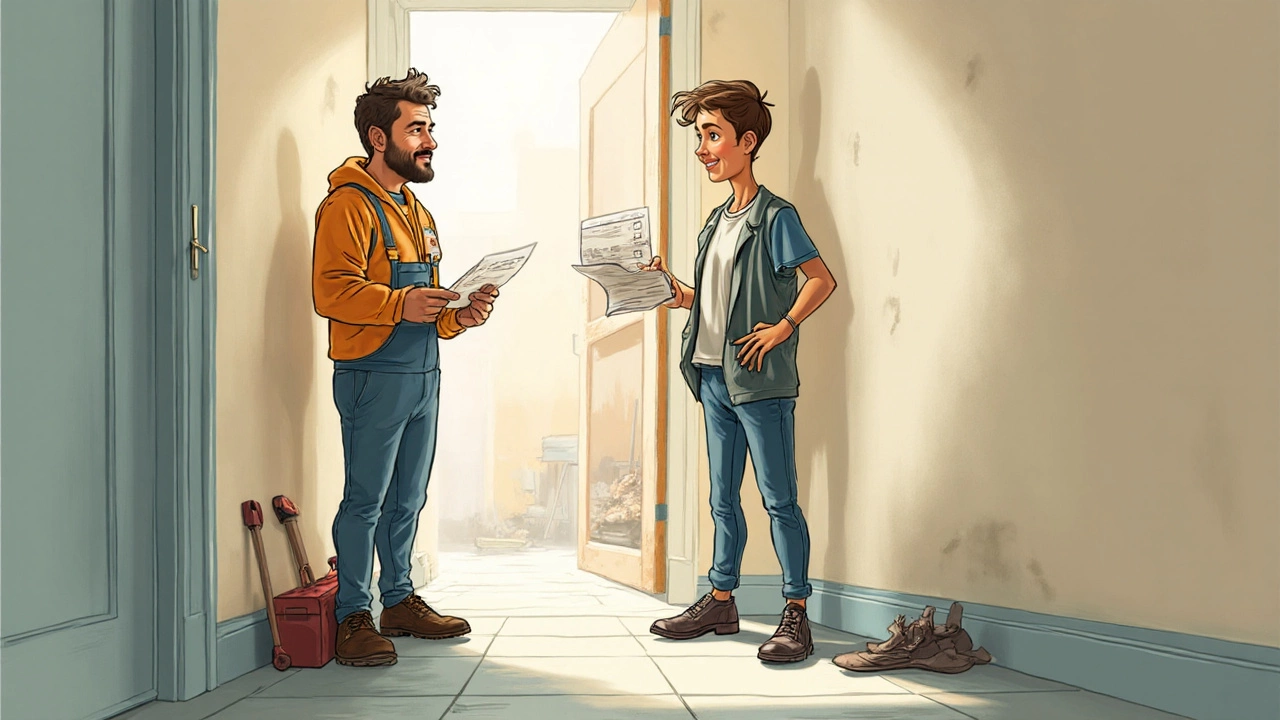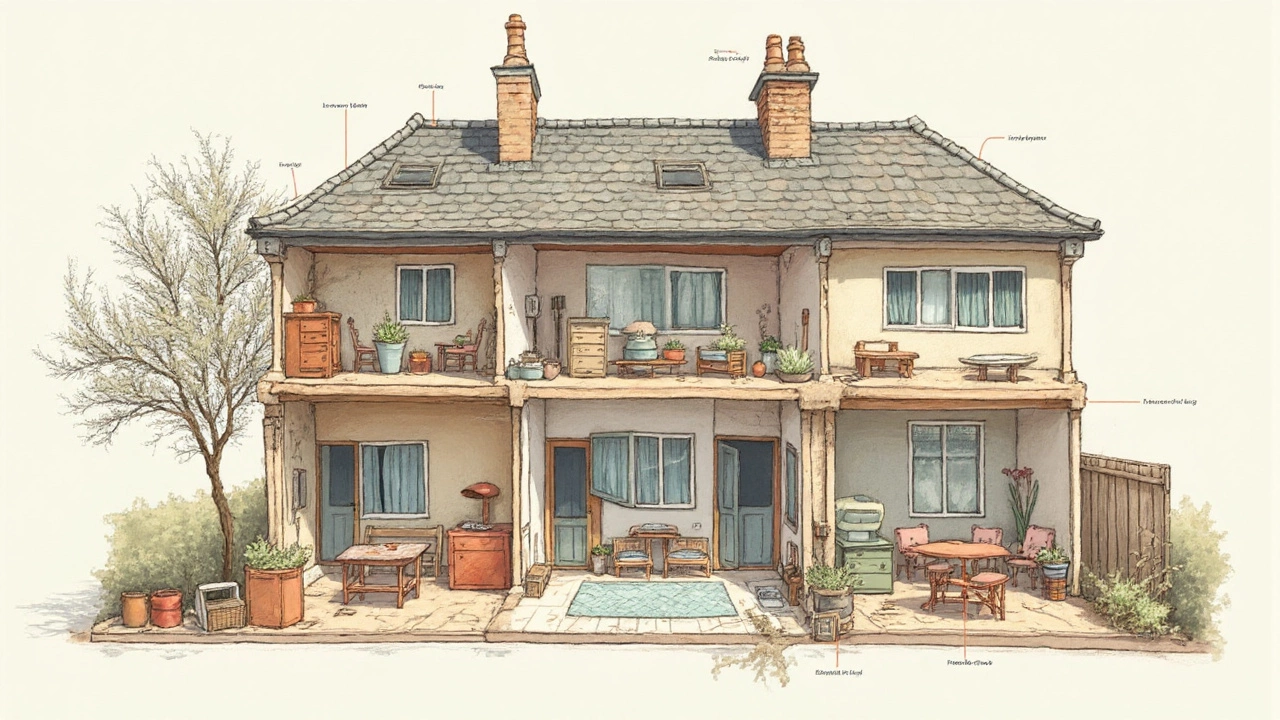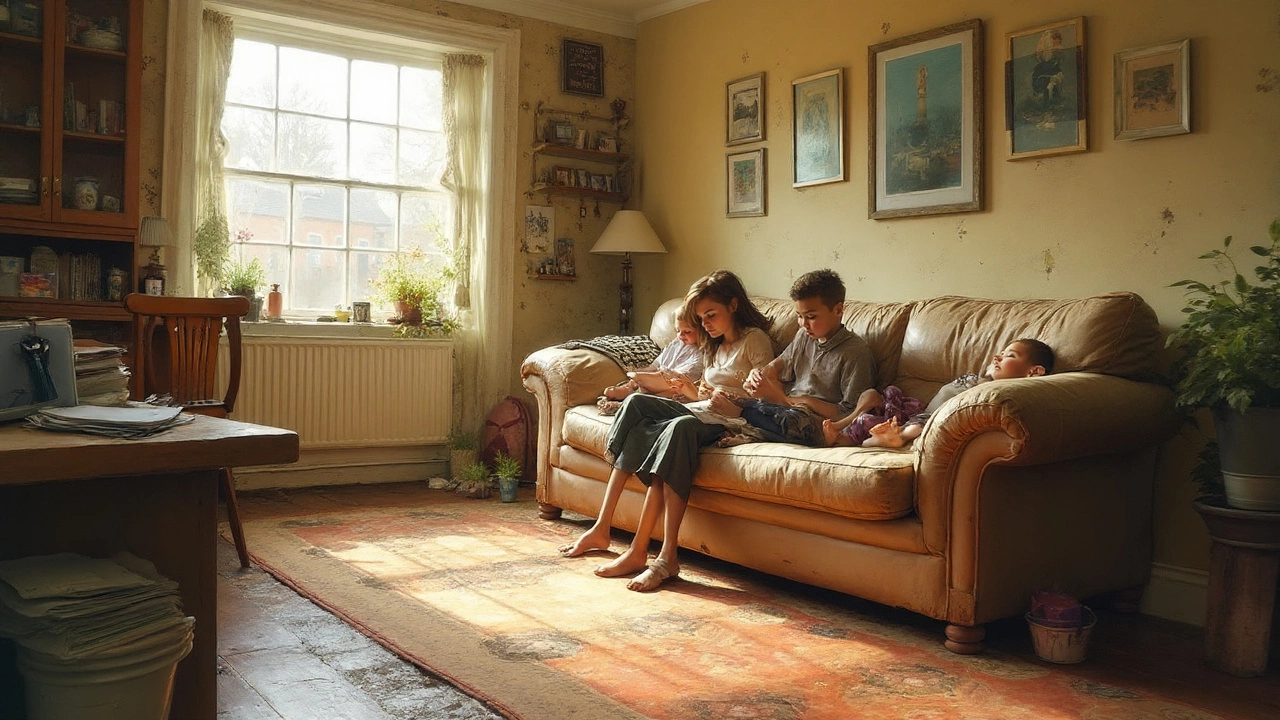Ever had a landlord complain about scuffs on the floor, or maybe you’ve wrangled over fading paint at the end of a tenancy? The debate about what counts as ‘wear and tear’ never gets old in the world of renting and property management. There’s a fine line between everyday use and genuine damage, and both landlords and tenants have their own ideas about what tips the scale. When you look at the details, though, ‘wear and tear expenses’ have a very specific meaning—and understanding this can save a lot of headaches, bills, and possibly a friendship or two.
What Exactly Does 'Wear and Tear' Cover?
Wear and tear is that innocent culprit behind faded carpets, squeaky door hinges, and a bit of chipped paint here and there. It’s the collection of small changes that happen to a property simply because people live in it. Forget wild parties or DIY disasters—ordinary life does have a cost. Landlords have to allow for it, and tenants aren’t supposed to be charged for normal ageing.
Here’s how the typical physical signs of wear and tear stack up:
- Frayed or faded carpets in busy hallways.
- Small scuffs or marks from moving furniture.
- Paint that’s lost some shine because of sunlight or just time.
- Loose handles or minor scratches on cupboards.
- Bathrooms showing limescale build-up or grout discolouring naturally.
- Faded or slightly peeling wallpaper—but not ripped or torn.
- Doors or drawers sticking a bit due to repeated use or humidity changes.
Now, this isn’t some secret list—if you look at the UK government guidelines, these are the sorts of examples that pop up. The Housing Act makes it pretty clear: landlords are expected to budget for these kinds of things. They’re practically a running cost of owning a property. For tenants, it means you shouldn’t get docked on your deposit just because the sofa legs left a mark on the rug or the bathroom tiles lost their sparkle after years of showers.
This doesn’t mean anything goes, though. If your puppy chews through the skirting boards or you accidentally put a hole in a door, that steps into damage territory—and reasonable repair costs sit squarely with you.
The Fine Line Between Wear, Tear, and Damage
It gets muddy fast, doesn’t it? Nobody wants to pay for problems they didn’t cause, and nobody wants their investment to fall into disrepair. But how do you actually work out where the line is? That’s when precise examples, context, and even a bit of maths come in handy.
Think about carpets. In most UK rentals, carpets are expected to last around five to seven years with regular use. If you move out after four years and there’s fraying, a landlord can’t expect you to pay for new carpets. If there’s a big wine stain that happened last month, though, it’s a different story.
The same logic works for kitchen appliances—nothing lasts forever. Here’s a quick rundown to make things simple:
| Item | Expected Lifespan (Years) |
|---|---|
| Carpet | 5-7 |
| Paintwork | 2-5 |
| Fridge/Freezer | 8-10 |
| Washing Machine | 7-10 |
| Kitchen Units | 10-15 |
If something breaks close to the end of its expected life, it’s probably fair to call it wear and tear. But if a tenant’s actions hasten that by years—accidentally or otherwise—that’s going to cost extra.
One pro tip: photos and inventories at the start and end of a tenancy matter. When everything’s documented, landlords and tenants can both flick back and see exactly what changed, so there’s less need for guesswork or arguments.

Why Landlords Should Budget for Wear and Tear Expenses
You’d be surprised how many landlords in Bristol and around the UK still get caught out by the ordinary toll of time. So often, the mistake is thinking that rental income is pure profit—until reality hits with a hefty bill for re-carpeting or repainting that isn’t anyone’s fault.
Let’s get practical: budgeting is your best friend here. Experts suggest landlords set aside 10–15% of their annual rental income for routine maintenance and wear and tear. For an average Bristol flat fetching £1,200 per month, that’s about £1,440 to £2,160 a year. Spend it over time as jobs pop up, and you’ll avoid nasty surprises later.
Maintaining the property isn’t just about keeping it looking fresh—it’s a legal responsibility, too. Under the Landlord and Tenant Act 1985, landlords must ensure homes are ‘fit for human habitation’ and safe. Shaky banisters, dodgy light fixtures, and general dilapidation can quickly land you in hot water, especially in student or family rentals where there’s constant churn.
Some landlords try to offset these costs by charging higher rents or putting tough clauses in tenancy agreements. But legally, they can’t sidestep genuine wear and tear. Courts almost always side with tenants if repairs are pushed onto them without reason.
A seasoned landlord I spoke to last July swears by routine interim inspections. He pops in every six months, notes down any early signs of wear, and does the odd repair before things snowball. His logic? Small, regular spending trumps struggling with one giant overhaul right before new tenants move in. Smart thinking.
The Tenant’s Perspective: Avoiding Disputes and Surprise Charges
Renting can feel a bit like walking on eggshells if you’re worried about deposit deductions. Here’s the trick: stay ahead by knowing your rights, and make sure you’re looking after the place without being obsessive. The law—especially in England under the Tenancy Deposit Protection (TDP) schemes—sides with reason. You can’t be charged for faded curtains or sun-bleached paint.
Here are some ways tenants can keep everything smooth:
- Take date-stamped photos before moving in—get every corner, especially any marks or quirks you spot.
- Ask for a proper, detailed inventory—not just a tick box.
- Clean regularly to prevent issues getting worse (think grout, limescale, skirting boards).
- Report any real damage, like leaks or broken appliances, as soon as it happens.
- If you accidentally cause damage, own up right away. It’s usually cheaper and friendlier than hiding it.
- Check what your tenancy agreement says about repairs—some ask tenants to do small jobs like changing light bulbs, but nothing major.
When you move out, it pays to do a mock inspection. Go room to room, looking through the lens of your check-in photos and inventory. If you spot extra marks or missing bits, try to fix them sensibly—don’t go overboard with touch-up paint unless you’re sure of the shade!
According to The Dispute Service (TDS), 56% of all tenancy deposit disputes in the last year came down to cleaning or small damages. But almost half of those are resolved in favour of tenants who had clear records, photos, and could prove they’d acted responsibly. That’s a good reason to keep digital backups and emails, just in case.

Wear and Tear Beyond Renting: How Homeowners Should Think About It
It’s not just tenants and landlords who need to think about wear and tear expenses. Homeowners in Bristol and beyond face the same slow march of time—just without the deposit drama. The trick is seeing wear and tear as a sign that a house is being lived in, not as a problem that needs solving every week.
But if you ignore it, bills really will mount up. The Royal Institution of Chartered Surveyors (RICS) suggests homeowners should budget about 1% of their home’s value each year for general repairs and updating—that’s around £3,000 per year on a £300,000 house. Doing little bits now and then keeps bigger jobs from sneaking up. If you haven’t cleaned out your gutters in two years, or your window frames are flaking, you’ll end up paying more in the long run when real repairs are needed.
Here’s a quick tip: make an annual calendar checklist. Pair it with something you already do every year—birthday, car MOT, you name it. Pop on jobs like:
- Checking roof tiles after storms
- Oiling creaky door hinges
- Clearing out gutters
- Testing smoke or carbon-monoxide detectors
- Touching up paintwork in high-traffic areas
Lots of Bristol homes have wooden sash windows that need a bit more love, or old style radiators that quietly gather grime. Staying ahead with small tasks keeps everything looking good and stops rot or leaks from taking hold.
If you’re thinking about selling, minor wear and tear won’t usually turn away buyers, but fixing bigger visible issues helps boost your home’s appeal. First impressions do count—no one loves a sticky door, and that flickering hallway bulb will get noticed at the worst moment.
Treat wear and tear as part of a home’s story, not the end of it. With a little planning and a practical approach, it won’t be the thing that keeps you awake at night—or empties your bank account unexpectedly.
